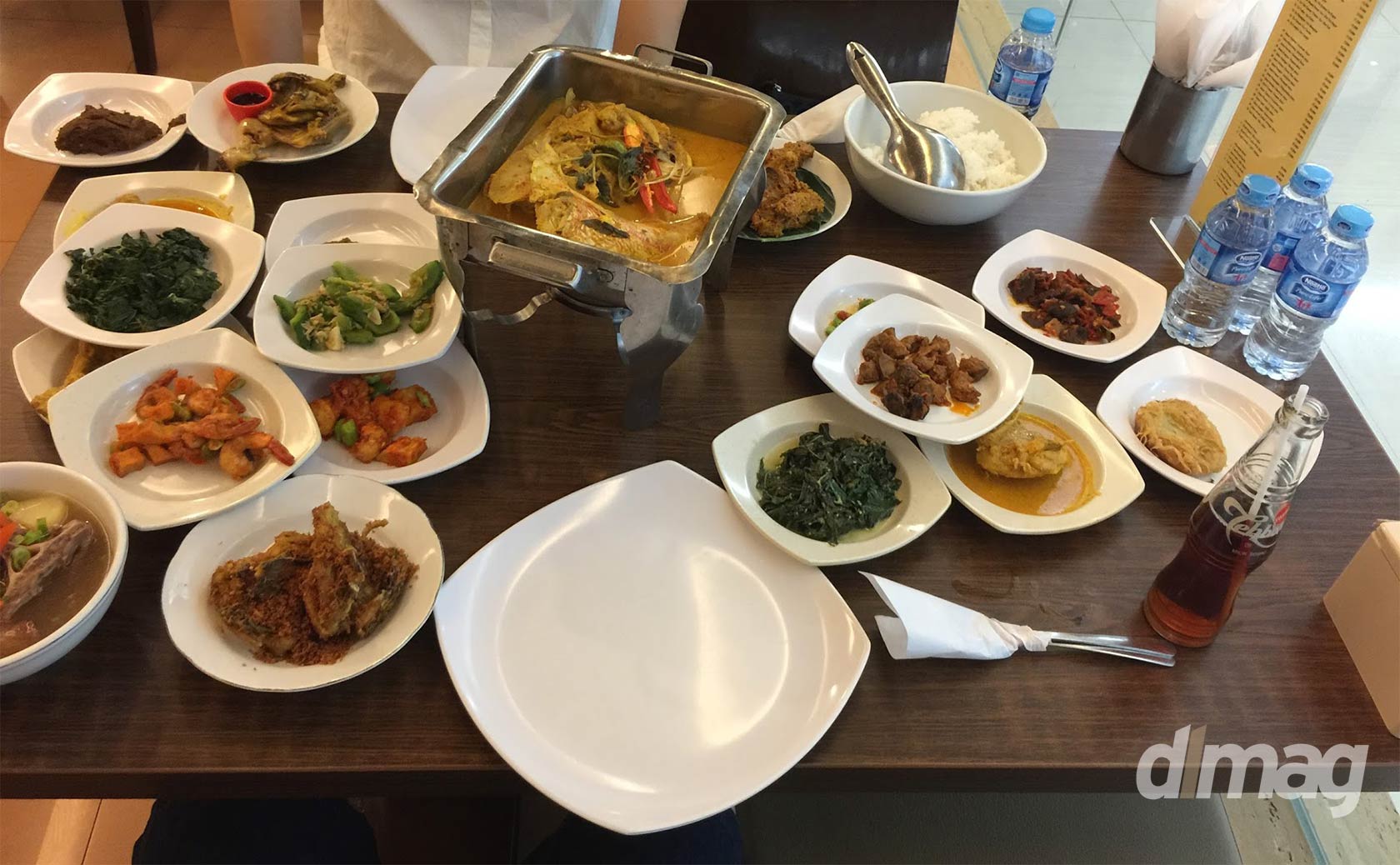In the strictest, most water-tight definition, Nasi Padang is steamed rice and multiple dishes selections that originates from Indonesia’s Padang city (hence the name). But that’s only the strictest definition– the real Nasi Padang has over 30-odd variations that can leave the newbie gourmand stumped.
Nasi Padang, apart from being the most popular food in Indonesia, is also a method of eating where the diner is presented with a number of dishes to choose from based on their palate. Despite the seemingly elaborate display of culinary creations, ordering Nasi Padang is but a straightforward affair– choosing between–
Pesan method: choosing your dishes from a glass display
Nasi Ambeng method: a family-style platter of rice and sides
Hidang method: automatic stacking of fixed dishes without any ordering on the diner’s part
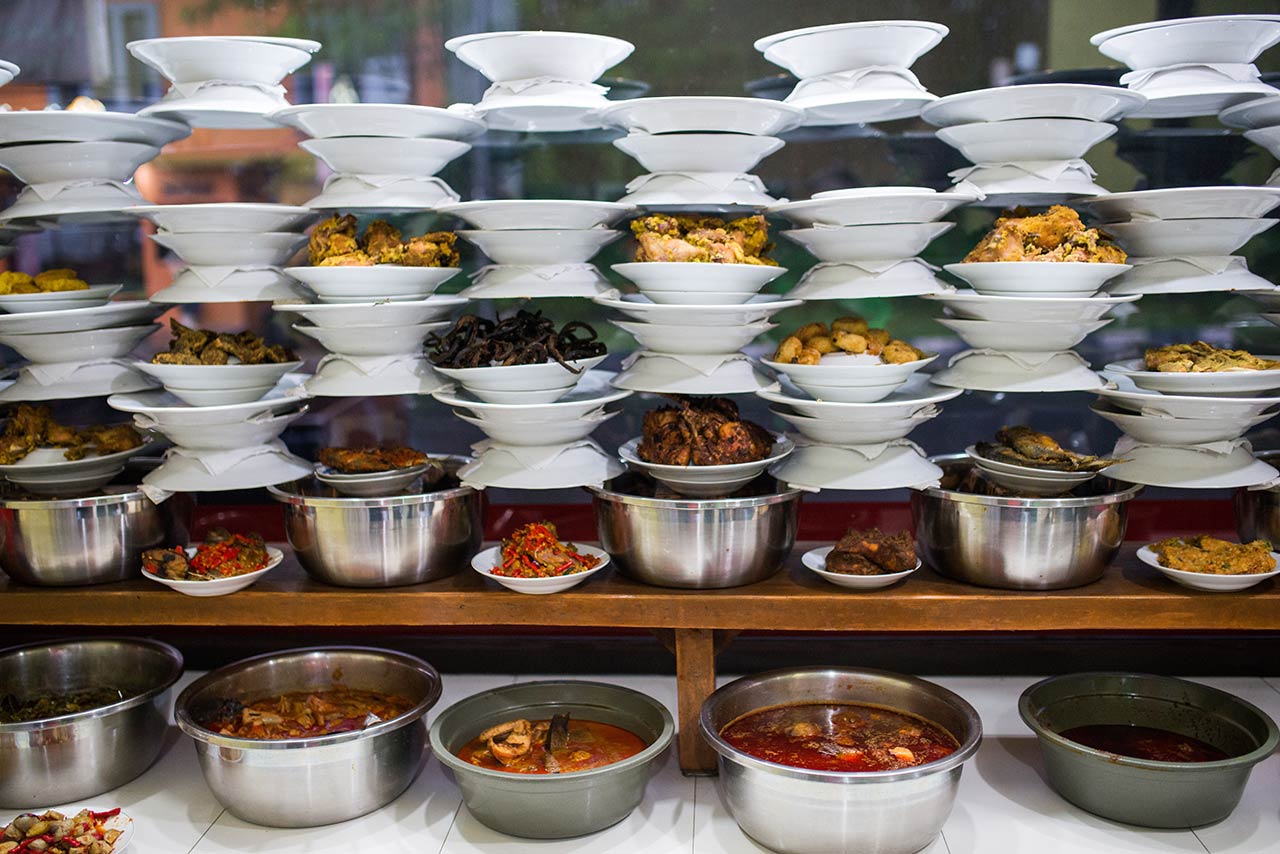
As Nasi Padang is popular across South East Asian countries like Indonesia, Malaysia, and Singapore, there are hordes of varieties to choose from, each better than the last.
However, the best way to avoid getting overwhelmed is to strike a balance between flavors and textures. This is easily done by sticking to a general rule of thumb– one meat-based dish, one veggie-based dish, and one side.
If you’re ordering family-size, then scale this rule until you have equal servings to get the best bang for your buck in terms of taste.
The Best of Nasi Padang Dishes
Once you’ve got the basics down pat, it’s time to pick a dish. Whether you’re a traveler or just a general newbie to Padang cuisine, it can get quite confusing to pick the first dish which will make or break your impression of Nasi Padang. Here are a few creations to get the ball rolling:
Rendang
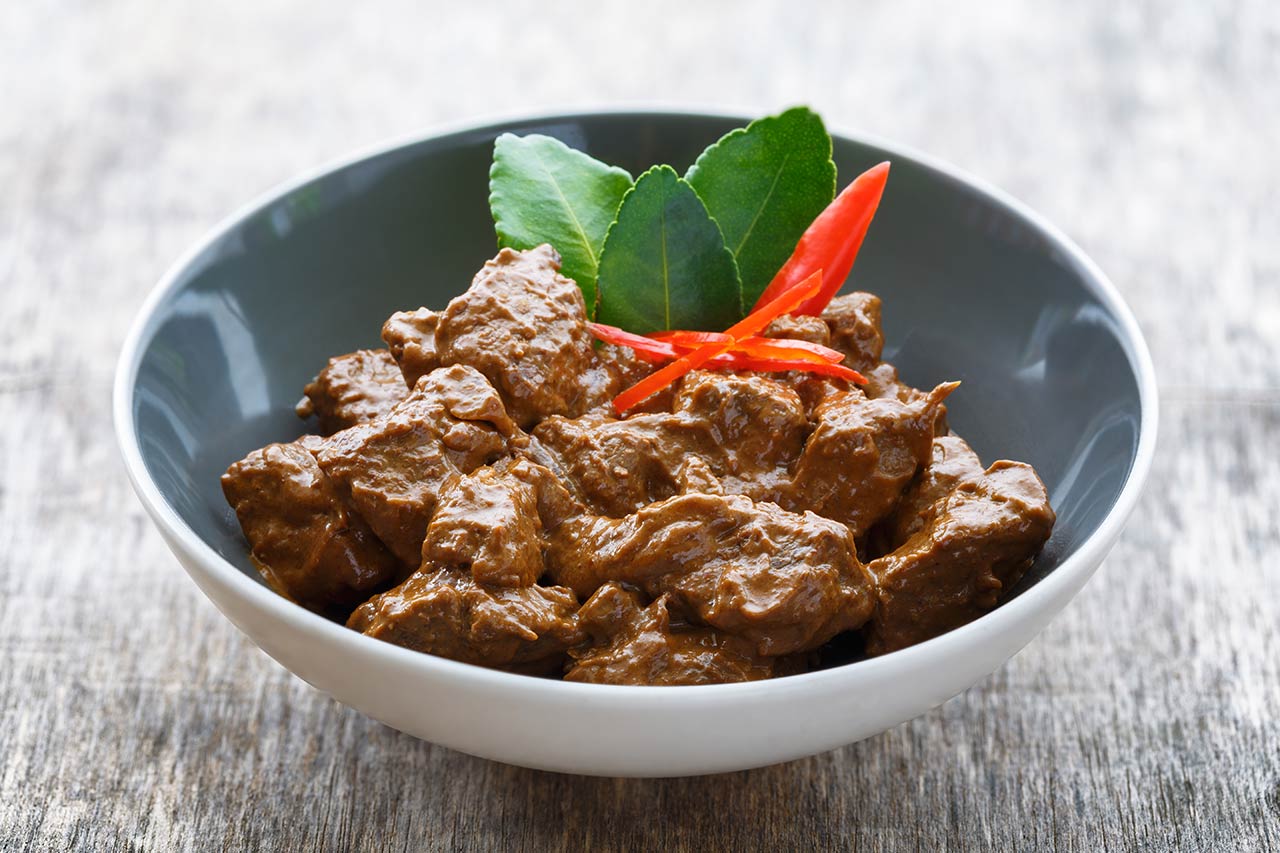
What looks like a dish of beef in seemingly innocuous brown gravy is actually a medley of flavors and textures that you’ll only experience when you pop that first bite.
The robust gravy is made with ingredients including garlic, ginger, and lemongrass which are pounded into a paste and then braised in flavorsome coconut milk.
A tip to learn whether your Rendang is authentic– the gravy needs to be thick, not runny or saucy, and should evenly coat the beef cubes, which themselves should be tender enough to stick a fork into.
Sotong Hitam
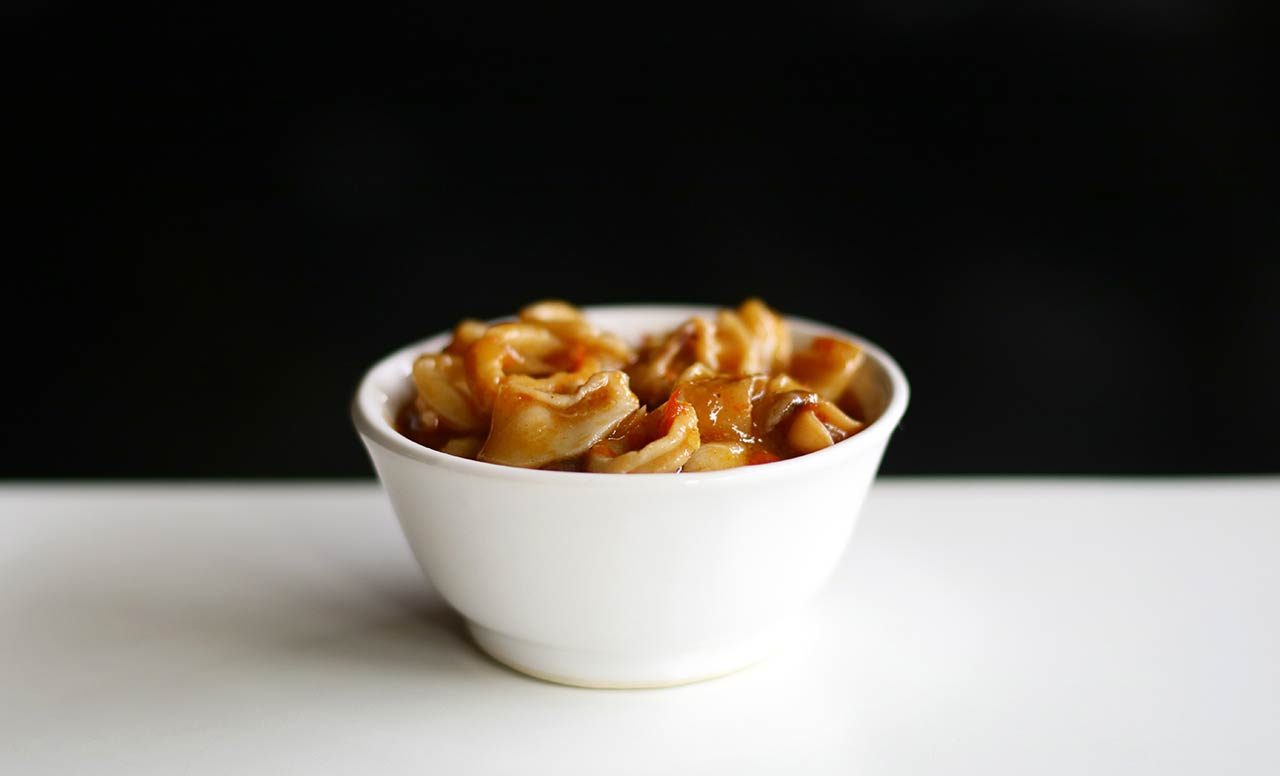
Squid ink is a big part of Indonesian and Malay cuisine and has hence found its way to Nasi Padang dishes too. Sotong Hitam literally translates to ‘black squid’ and the dish, like Rendang, also features ginger, garlic, and lemongrass.
The addition of tamarind juice provides a tangy flair while the squid ink is definitely the salient feature of this seafood-based dish.
Sambal Goreng
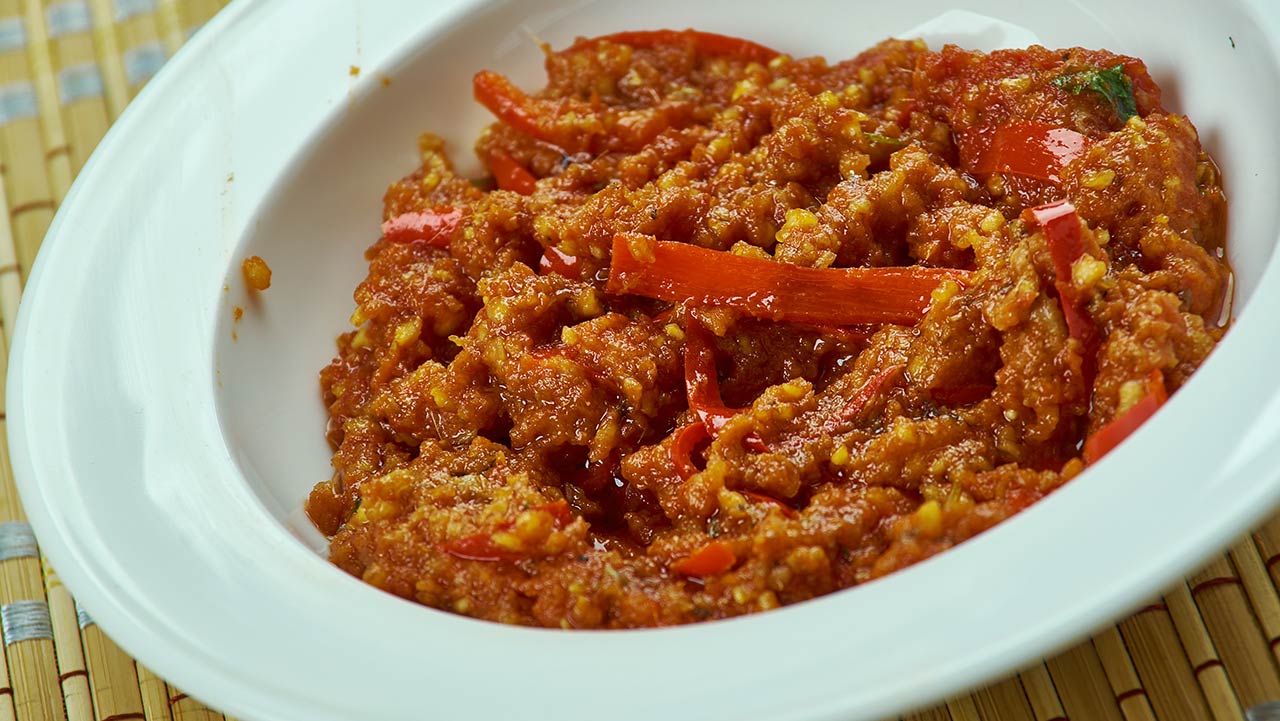
This dish isn’t considered to be conservative Nasi Padang in that it’s not Sumatran, but that doesn’t take away from the fact that this deceptively simple stirfry dish packs quite a punch on the flavor end.
The main stars of the dish are soya bean cake and its fermented counterpart (Tempe), simmered in pungent coconut gravy and served with Padang rice. Sambal Goreng is an excellent choice for vegetarians as it loads up on the flavors without depending on meat and is also high in protein (gym-goers, you hear?).
Ayam Balado
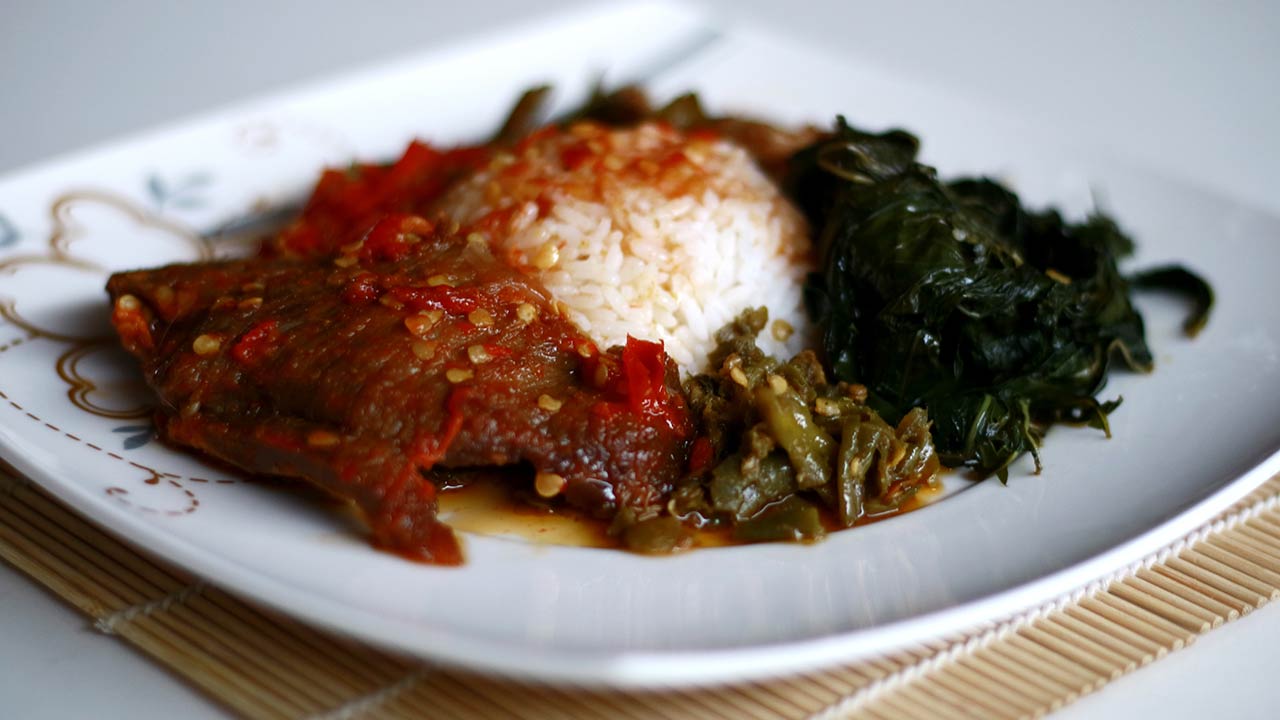
Balado is a hot and spicy mixture that’s native to West Sumatran cuisine. It’s heavy on the spices– hot chili pepper is ground and stir-fried with garlic, shallots, and tomatoes in coconut or palm oil Adding key line lends the dish a zest that goes very well with the overarching spicy tones.
Ayam Balado is this spicy gravy with chicken (Ayam in Bahasa), but Balado, in general, can be paired with almost any meed including mutton, pork, and beef.
Dendeng Batokok
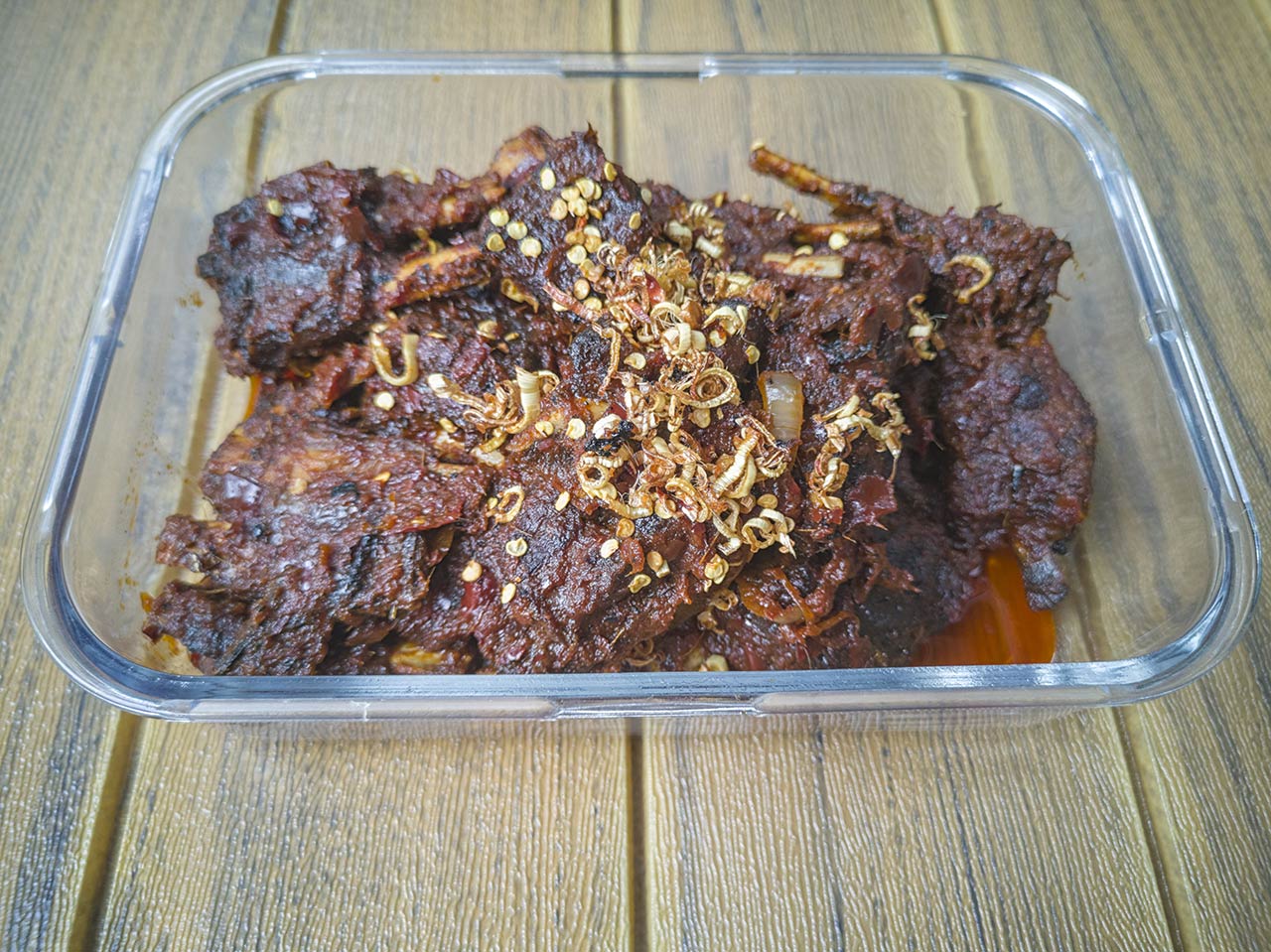
‘Dendeng’ means thinly sliced meat, the star of this dish, as it’s preserved in sugar and spice and then dried through a dedicated frying process. Its roots are in travel– nomads would transform meat into this jerky-style creation to carry with them during journeys.
As a side in the West Sumatran style, the beef dendeng is mixed with chilies and other ingredients, but variations exist that involve exotic meats such as dried pork and deer.
A closely-related dish (by name only) is the Dendeng Sapi, but this dish packs sweet, caramelized flavors instead of robust spiciness– perfect for those with discerning palates or low spice tolerance!
Why you must try Nasi Padang
So far, the descriptions have probably induced drool-worthy images and a sudden desire to travel to Indonesia, Singapore or Malaysia to try Nasi Padang. However, there are more reasons to try Nasi Padang:
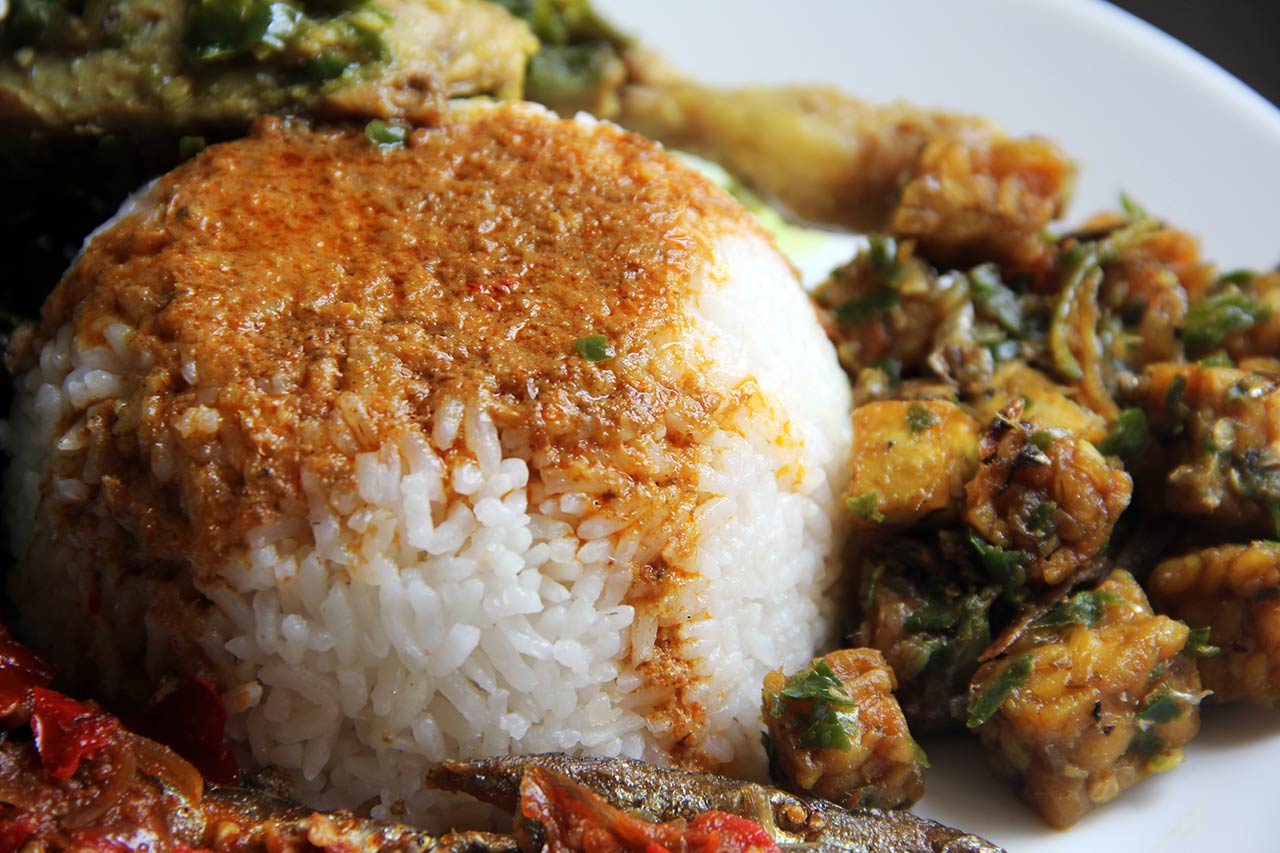
Power-packed flavors
This is quite the highlight of Nasi Padang. Thanks to the generous yet measured use of ingredients like chilies, garlic, key lime and tamarind, each Nasi Padang dish is a burst of flavor, with several notes bursting through with every chew.
It’s quite a complex setup, which once again stresses the need to pick the right dishes so you don’t overwhelm your tastebuds.
Meet a whole host of dishes
The list above doesn’t even begin to cover the otherwise extensive list of Nasi Padang dishes– whether meat-based, seafood-based, vegetable or side. While steamed rice is a common factor, a veritable miniature banquet usually contains 14 dishes, especially in dine-in restaurants, hidang style.
Not mentioned in the list are Gulai Cubadak (unripe jackfruit), Paru Goreng (fried cow lungs), Ikan Bilih (fried freshwater fish), Terong Balado (chili eggplant) and Lele Goreng (fried catfish) among others.
Meet popular culture
Nasi Padang is quite literally a feast fit for a king (or anyone with a great appetite and desire to experiment). A Norwegian singer, Audun Kvitland Røstad, even went as far as to create an ode to the Padang fare and his consequent falling in love with it. Naturally, this went viral.
Nasi Padang is a must-have, whether in Singapore, Indonesia, Malaysia or any other South East Asian country that has a few good Nasi Padang establishments in its culinary arsenal.
Minangnese, Asian locals and travelers from across the globe who’ve tried the mini-banquet can testify that Nasi Padang goes beyond an all-you-can-eat style meal– it’s an experience to be had.

